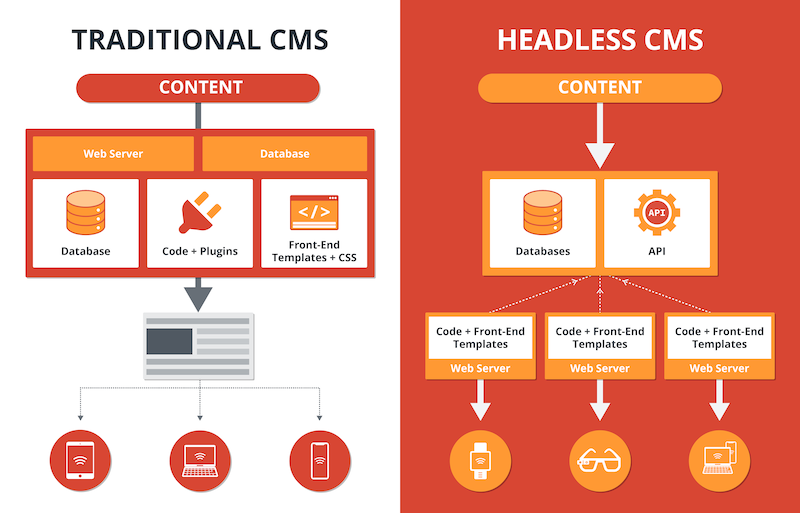The Headless CMS Revolution: Smarter Content, Faster Delivery

Traditional CMS platforms like WordPress and Joomla are showing their age. While they’ve served the web for decades, their rigid structures, bloated themes, and plugin dependencies are holding modern businesses back.
That’s where Headless CMS enters the picture — offering flexibility, scalability, and seamless integration with today’s tech stack.
What Is a Headless CMS?
A headless CMS decouples the backend (where content is stored and managed) from the frontend (where it’s displayed). Instead of pushing content through a fixed template system, it exposes content via APIs — so it can be delivered to websites, mobile apps, smart devices, and more.
Think of it as:
Create once, distribute anywhere.
Why Headless? Key Benefits
1. Omnichannel Content Delivery
One article — infinite destinations:
- Web apps
- Native mobile apps (iOS/Android)
- Smartwatches
- Voice assistants
- In-store screens
- Chatbots and AI agents
2. Speed and Performance
No bloated themes. No heavy page builders.
Frontend teams use React, Vue, or Svelte to build lightning-fast interfaces, powered by lightweight APIs.
3. Future-Proof Architecture
Tech evolves. Fast.
With a headless setup, your content outlives the frontend. You can redesign your app, launch new devices, or add AI layers — without touching your content database.
4. AI-Ready Integrations
Because content is API-first, it's easy to:
- Feed your CMS into GPT agents
- Generate summaries, translations, or SEO tags via AI
- Train chatbots on structured content
- Create automation triggers based on content changes
5. Seamless Automation
Combine headless CMS with automation platforms like Make.com or n8n, and you can:
- Auto-post new articles to social media
- Trigger Slack or email alerts when content is updated
- Sync CMS content to Airtable, Notion, or CRMs
- Use webhooks to notify other systems instantly
Use Case: Web App + CMS + AI
Imagine this:
- Marketing writes content in Ghost CMS
- The content is pushed via API to a Next.js web app
- Make.com triggers send updates to a Notion roadmap
- OpenAI generates meta descriptions and title variants
- Slack notifies the team when a post goes live
- IndexNow API pings search engines instantly for SEO
That’s the power of going headless.
What About SEO?
Modern headless CMSs like Ghost and Strapi are fully SEO-optimized when paired with modern frontends:
- Clean URLs
- OpenGraph & meta support
- Dynamic sitemaps
- Canonical tags
- Instant indexing with IndexNow
- Multilingual support via API logic
Scalevise & Headless: Smarter Together
At Scalevise, we help businesses build AI-powered, automation-ready platforms using headless CMS setups — integrating content into everything from onboarding flows to internal dashboards and GPT agents.
Whether you’re scaling your marketing, improving dev velocity, or launching multi-platform products, a headless CMS is the foundation that keeps it all connected.
Want to explore how headless architecture fits your business?
